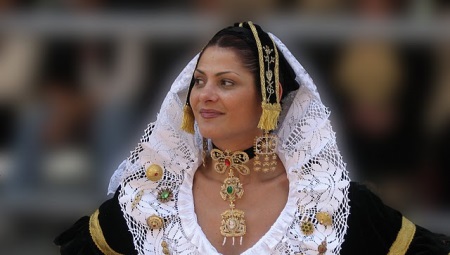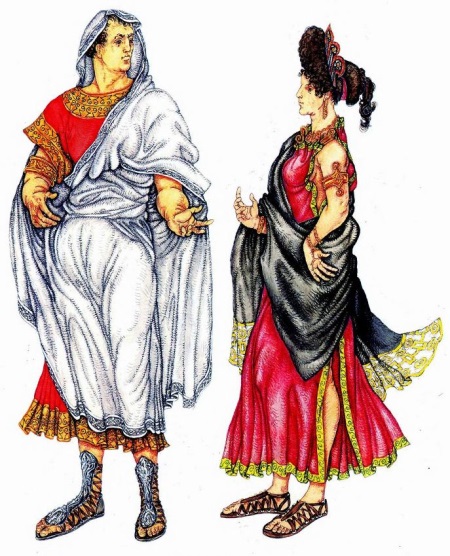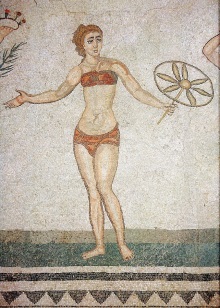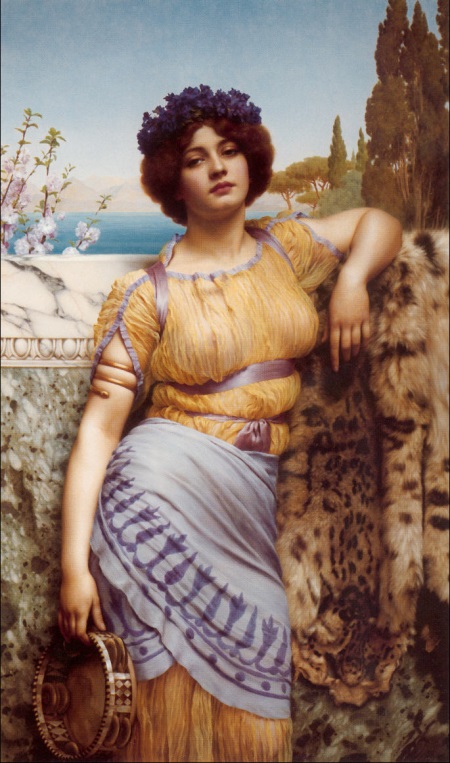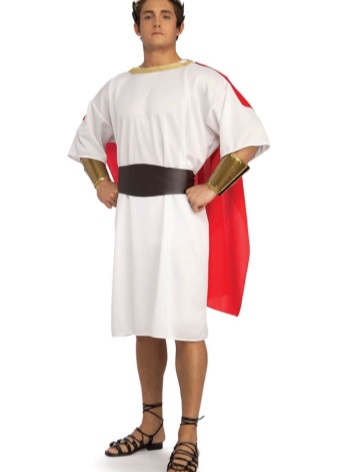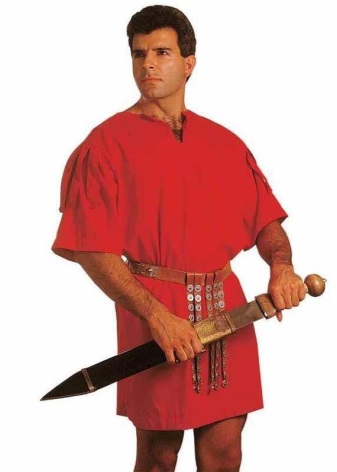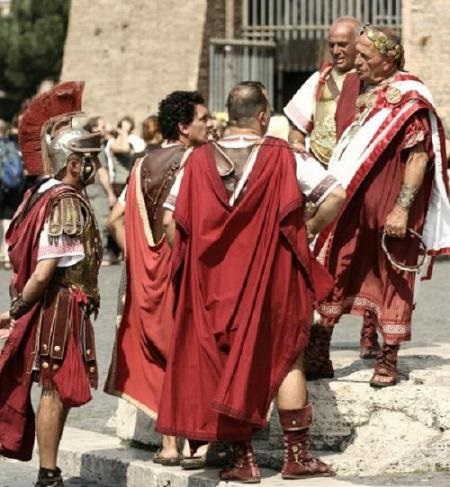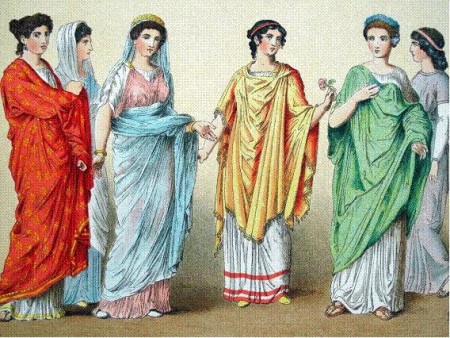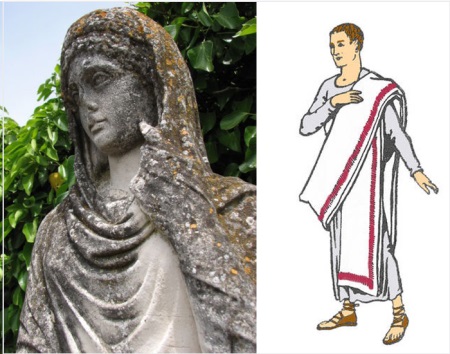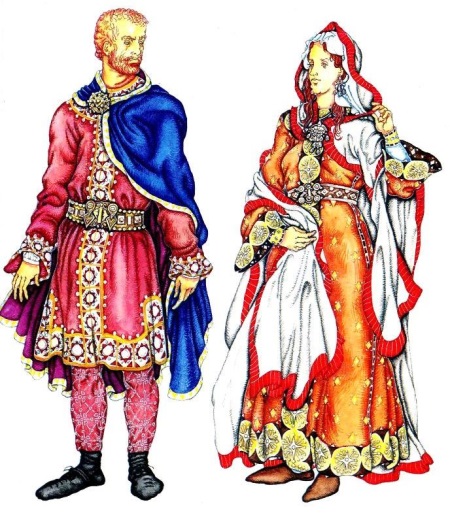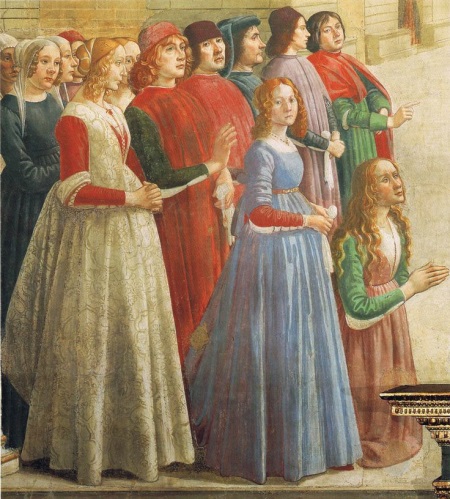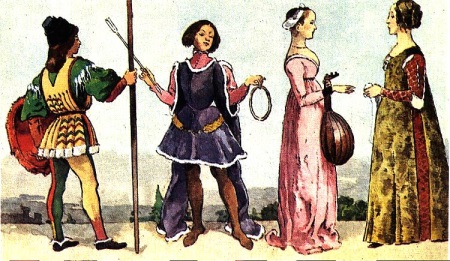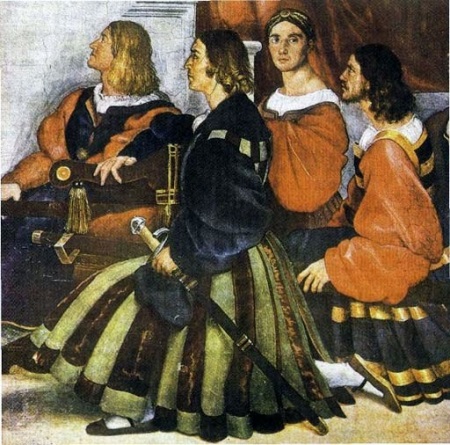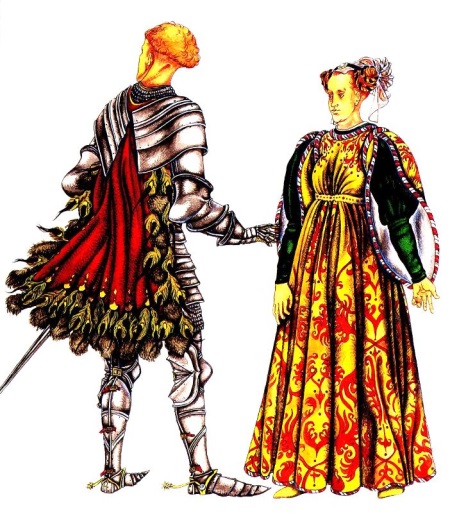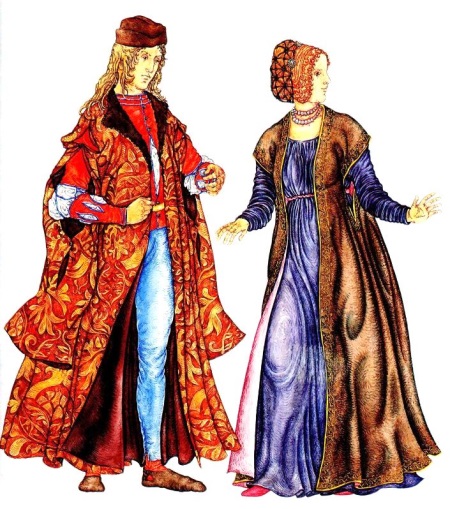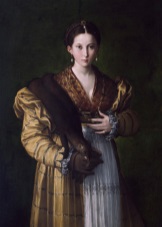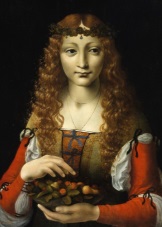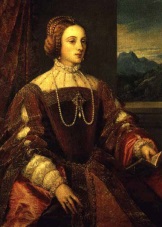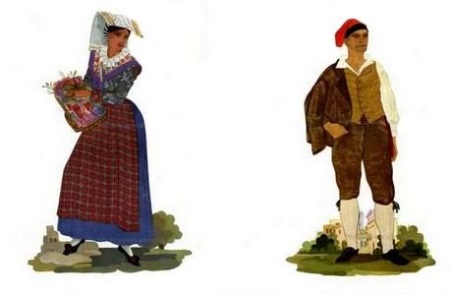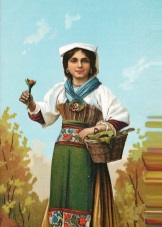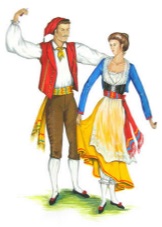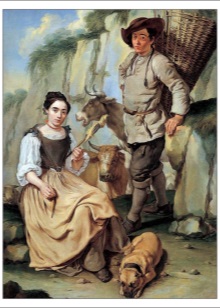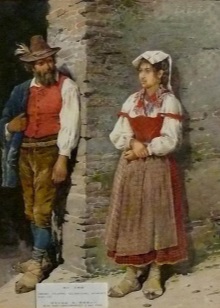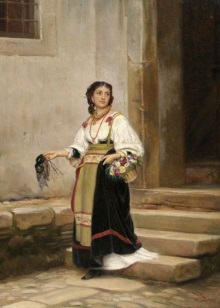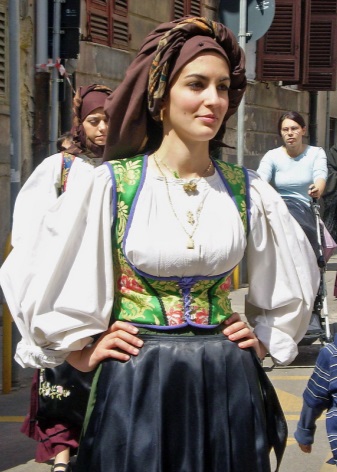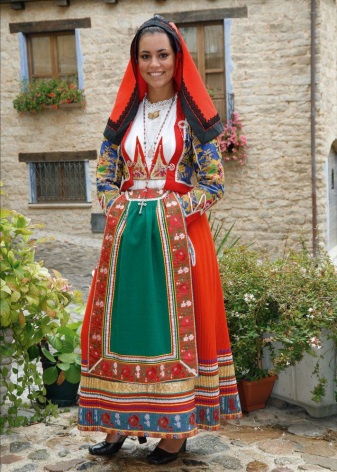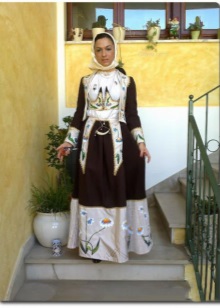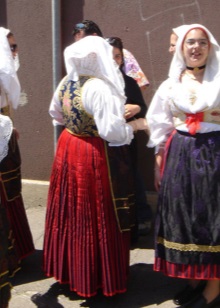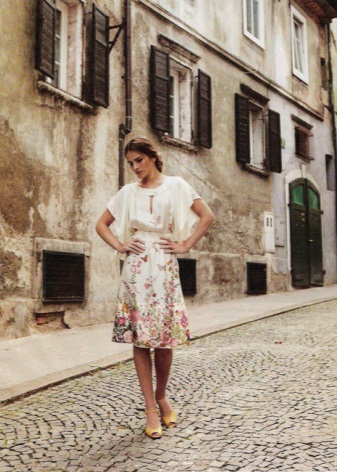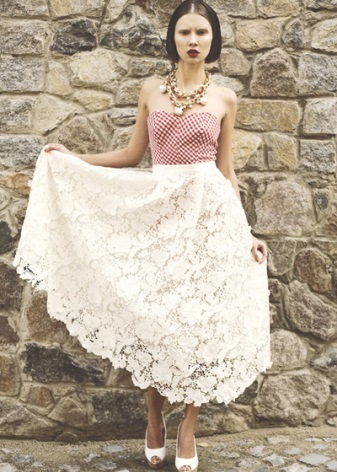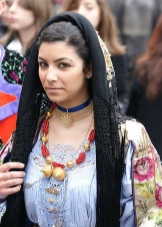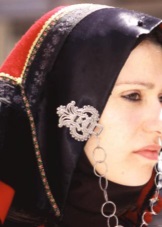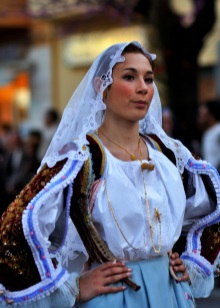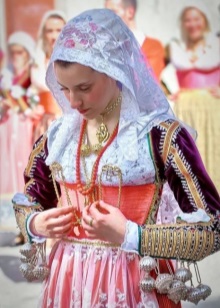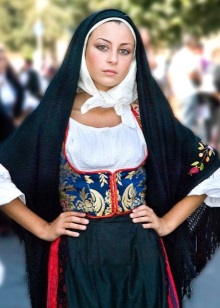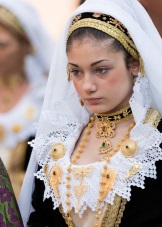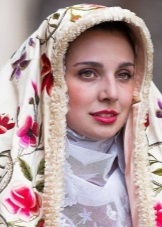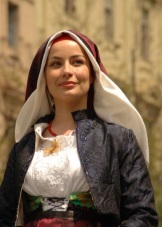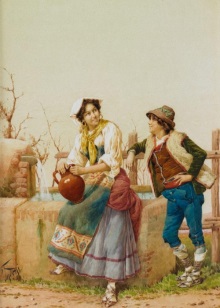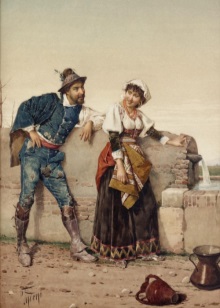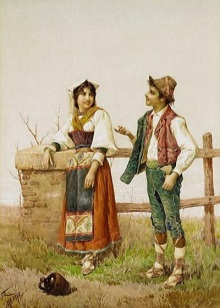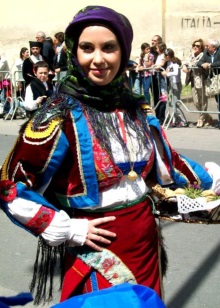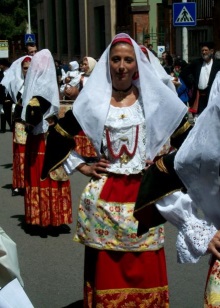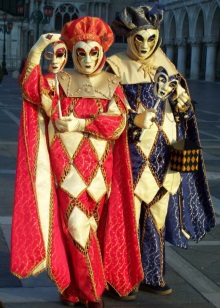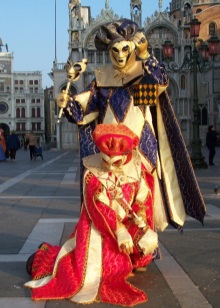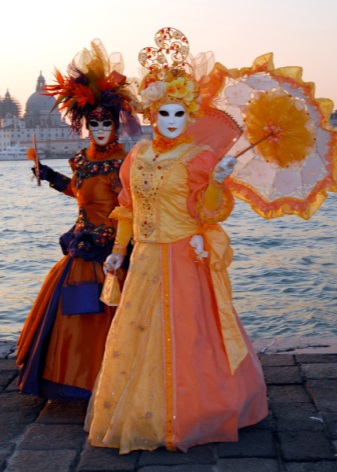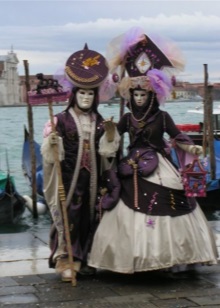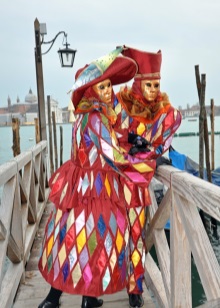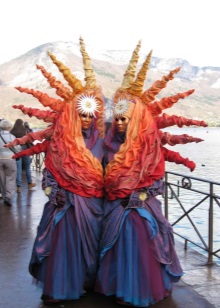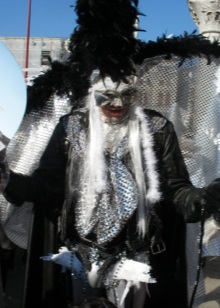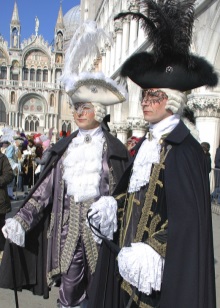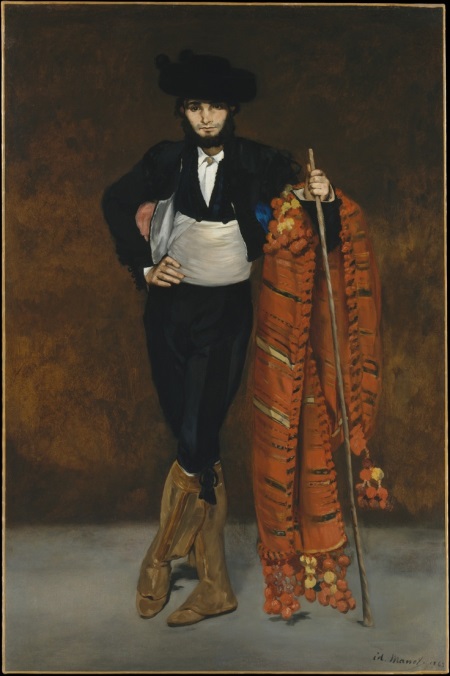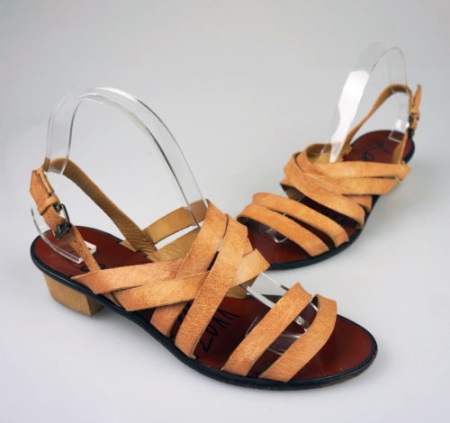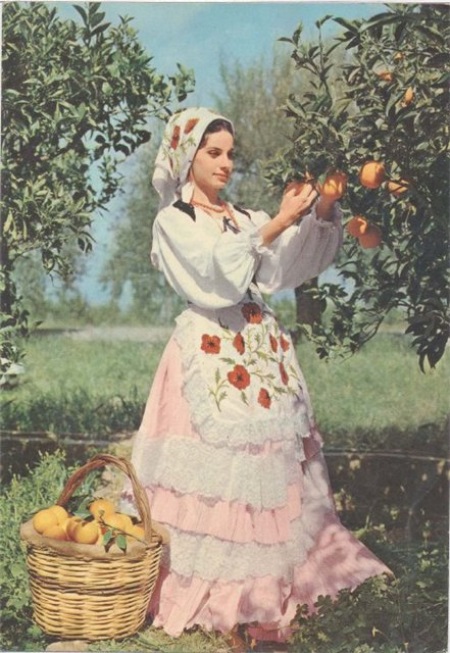National Italian costume has many interpretations, in each region it is different. However, outfits everywhere are distinguished by a riot of colors and a variety of decorative elements that are difficult to look away from. No wonder that it was in Italy that high fashion originated, and to this day this country is one of the capitals of the world fashion industry.
History of creation
Ancient Rome
The history of the national costume of Italy originates in Ancient Rome, where the outfit, in turn, was borrowed from the ancient Greeks. True, the Romans made their adjustments to it, adding a lot of interesting elements. In ancient times, clothing was unpretentious and was most often sewn from woolen cloths. Sewing was practiced minimally, instead of buttons and fasteners used brooches.
Already at that time, the Romans had a so-called underwear - cloth, wrapped around the thighs, one of the names of which is the sublarger. Women had a bra prototype — a fascia that supported the chest.
Sometimes a strofium was worn instead, it was worn over the main clothing.
The main element of clothing for men and women was a tunic, it was worn by both rich Romans and their slaves. The masculine usually reached the knee, and the feminine - to the toe, and could have sleeves. In the cold season, they warmed up, putting several tunics on each other. The clothes were sewn from the bleached linen, only multicolored stripes served as distinctive elements.
Colored tunics were designed for exceptional cases, and not everyone was allowed to wear it.
Free Romans could wear a toga. This right was deprived of slaves and foreigners. She was a piece of canvas, which was thrown over her shoulder in the manner of a modern postman bag. She was worn over the tunic, and so that she lay in beautiful folds, various weights were sewn into the hem.
In the women's wardrobe there was much less restriction, their outfits were painted in any colors available at that time. Over the tunic, rich women wore a shortened table — in order to demonstrate the layeredness of the dress and emphasize their wealth.
The outerwear served as a cape - racinium or pallas. It was worn by women and men. If it was very cold, they put on a heavy raincoat called laena, and also wore a raincoat with a hood - kukullus.
Sandals with a lot of leather straps were used as shoes. Designers to this day are inspired by this shoe, constantly returning to sandals gladiators.
The Middle Ages Era
In the 5th century, the fall of the Roman Empire occurred, which significantly influenced not only the history of Italian, but also the European costume as a whole. At that time, clothing remained simple and unpretentious. It was sewn mainly from natural fabrics of gray and brown shades. The feudal lords wore bright silk clothes, which were brought from Byzantium. Clothes decorated with embroidered patterns and hem.
Women wore clothing that conceals a figure; this was due to the influence of the Christian church. Only in the tenth century the silhouette began to change, and the ladies began to emphasize their figure. In the XII century, the dress began to fit around the waist, a lacing appeared on it. Also began to make tucks and the costume was divided into two parts - the lower and upper.
Renaissance
The Renaissance came to Italy before other European countries, it very quickly turned into the richest country. This directly affected the Italian costume of 15-16 centuries, which was imitated in other European countries. In a fashion simple smooth lines, ease of wearing and "standard" proportions. However, the simplicity of the cut was compensated by the use of expensive fabrics - brocade, velvet, silk.
Initially, preference was given to bright cheerful colors, but over time they were replaced by dark, and then completely black.
In the 16th century, most of the country was seized by Spain, Italian culture, like the national costume, continues to develop only in the north of the country and in Venice, which managed to preserve independence.
Elements of a men's suit of this period:
- Kamichi - the bottom shirt;
- Calzoni - tight short pants;
- Sottoveste - fitted jacket, could be sleeveless;
- Jorn - a festive raincoat with folding sleeves and a rich finish.
Elongated long caftan was worn by older men. It was combined with a white bib (prototype of the shirtfront). Over time, the Italian outfit was modified. Shirts came in fashion, which were strung together by a cord around the neck. They were worn with a caftan with a deep square neckline or stand-up collar. Combined it with stockings and pants to the knee. From above they wore jubbone - a magnificent and long raincoat, which over time became narrower and shorter. He had puffy sleeves and a big collar.
Nobles always carried a sword with them (left) and a dagger (right). The costume was supplemented with a purse with a belt, gloves and a massive gold chain. Women's suit was much more spectacular and richer, the girls wore a dress with a tight top and a skirt in the fold, which was called gamurra. The image was complemented with a light cape or a piece of fabric, which was attached to the dress.
The role of outerwear was played by a long raincoat, sometimes it was sewn with openings for arms. The accessories were wallets that were hung on the belt, gloves and handkerchiefs with embroidery.
In the 16th century, underwear and stockings appeared, dresses became lush and more spectacular. Girls began to wear dresses with a deep neckline, skirts were wide, heavy, with many folds. In winter, women complemented the outfit with a clutch made of silk with a fur trim. They wore balts on their heads or covered them with veils. Also, various bedspreads, usually of lace or silk, were thrown over the head.
Women's Renaissance costumes became the prototype of the national Italian costume.
Features
In Italy, unlike other European countries, there is no single national costume.
The fact is that different regions of the country were separated from each other for a long time, and finally united a little more than 150 years ago. At that time, the traditions were already fully established, and they differed in almost every single village taken!
Since it is practically impossible to consider each region, it is worthwhile to dwell on several main regions that stand out for their color. Of course, all varieties of Italian costume have the same elements and similarities.
The main feature is the brightness and rich color palette. The skirts of Italian girls are most often decorated with drawings of various colors - roses, peonies, daisies, daisies.
The great influence of the traditional costume can be seen in the collections of famous fashion designers Domenico Dolce and Stefano Gabbana, who often create dresses in Italian style.
Great attention is paid to jewelry, they are an integral part of the dress. Married girls are required to wear a hat and a black jacket, unmarried women wear a white apron, and widowed women wear a black one.
Varieties
Female
The basis of the national costume is a puffed skirt (gonna), a white, often embroidered shirt (camichia) and a bodice. Complements the image of a bright apron (grem biule) and a scarf on the head (fatzoletto).These are the main elements of the Italian costume, which are found in all regions of the country.
Only the length of the skirt, colors and colors, the presence or absence of lace details differ. Lace was usually popular with noble Italians, and casual clothes for ordinary girls were simple and modest. But wedding dresses were very spectacular - they were decorated with ribbons, feathers, embroidery, brooches.
Male
Men's national costume is much easier than women's. It consists of trousers below the knee (pantaloons) and a white shirt. The image is complemented by a short jacket (jacca) or sleeveless jacket (panchotto). The head is covered with a berrit - a woolen headdress or a Phrygian cap.
Pants can be of different lengths, but be sure to refuel in leggings. On the belt is fastened ragas - a piece of fabric that serves as a prototype of the belt. The front of the jacket is usually abundantly decorated with embroidery.
Costumes of the southern regions
The outfits of women from the southern regions and Sardinia in particular are particularly diverse. Rich ladies wore bright dresses, red prevailed. Be sure to complement your image with many rings on the fingers.
Poor women wore practical gray dresses with many pockets, the number of rings on the fingers was minimal. The most important element of the wardrobe was a handkerchief, which covered the head and shoulders. It could look like a real work of art: of fine lace or expensive fabric, decorated with elaborate embroidery. Sometimes it took more than one year of hard work to create one such headscarf.
On the occasion of the holiday, women could wear several skirts and scarves at the same time.
Venetian carnival costume
It was the Venetians who presented the idea of carnival to the world, and the Italians in general. Carnivals in Venice are still noisy and fun, during this period the city becomes a real theatrical scenery, where you can see unique productions.
All present are united by one thing - the presence of a suit and a mask. Most outfits are more like works of art, which sometimes goes up to 15 meters of fabric. In Venice, there are many shops that offer outfits for the carnival and all the necessary attributes for hire.
You can dress up as your heart desires - a noble lady of blue blood, Harlequin or Pierrot, a musketeer or a bautto. It all depends on creativity and fantasy. True, at street festivities it can be confined to just one mask, and at some official events it is simply indecent to appear without a suit.
Footwear
Footwear in Italy, as part of the national costume, is diverse. In many regions, it is still sewn by hand, however, like the costume itself, the cost of which sometimes reaches several thousand euros.
In different areas you can find such shoes:
- Wooden shoes with leather socks;
- Leather shoes with wooden soles;
- Textile shoes with solid soles;
- Soft sandals from stubby leather with long straps.
The latter came from ancient times and are still actively used in the mountainous regions of Italy.
Images
National outfit of a young girl in Sicily. A fluffy pale pink skirt, decorated with laces, a white shirt, a corsage, a white apron, with poppies embroidered on it and a duplicate of his headscarf. In the photo, the girl collects oranges, but in everyday life, of course, they wore more modest dresses. Such spectacular outfits were intended for a solemn occasion.
Italian wedding in national costumes. The bride has a rich outfit that is replete with embroidery, gold and jewelry. On the head is a traditional white scarf. The suit of the groom is more restrained - he is wearing a white shirt, long johns and a dark blue vest made of brocade.
